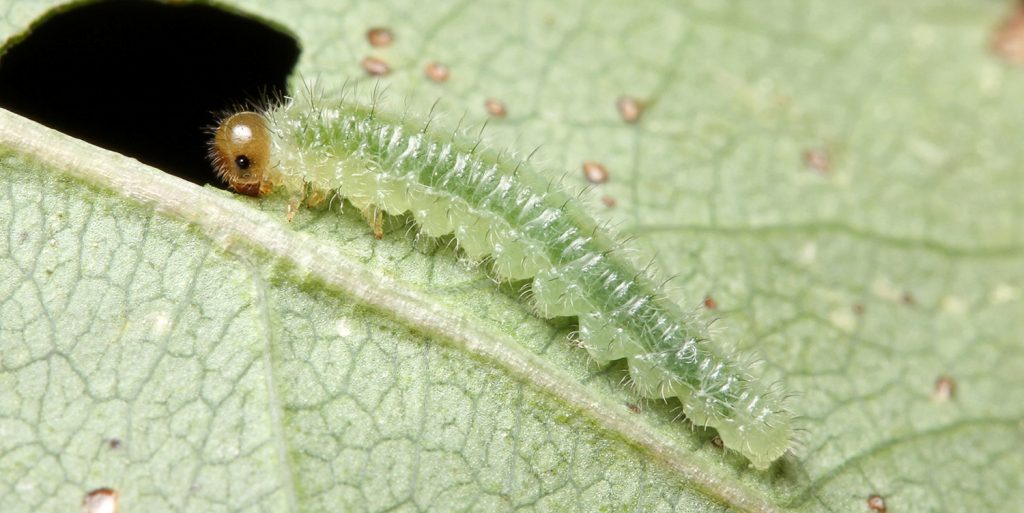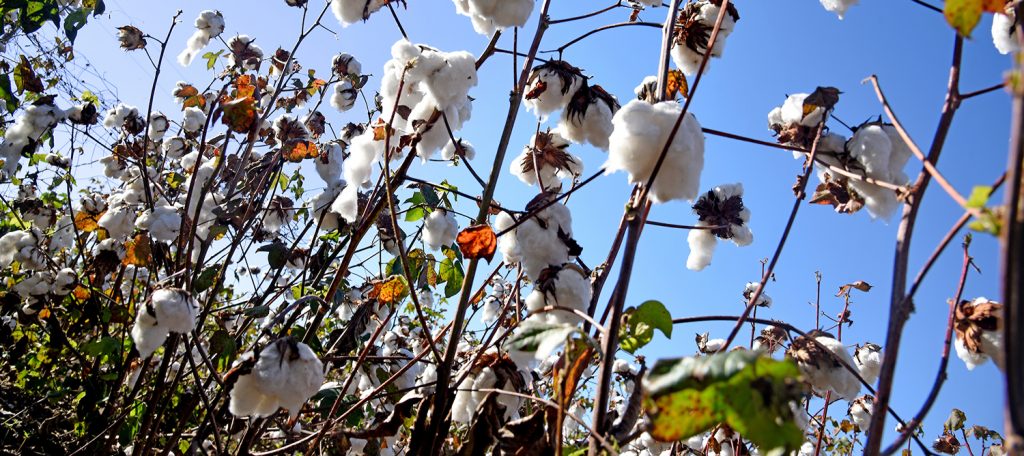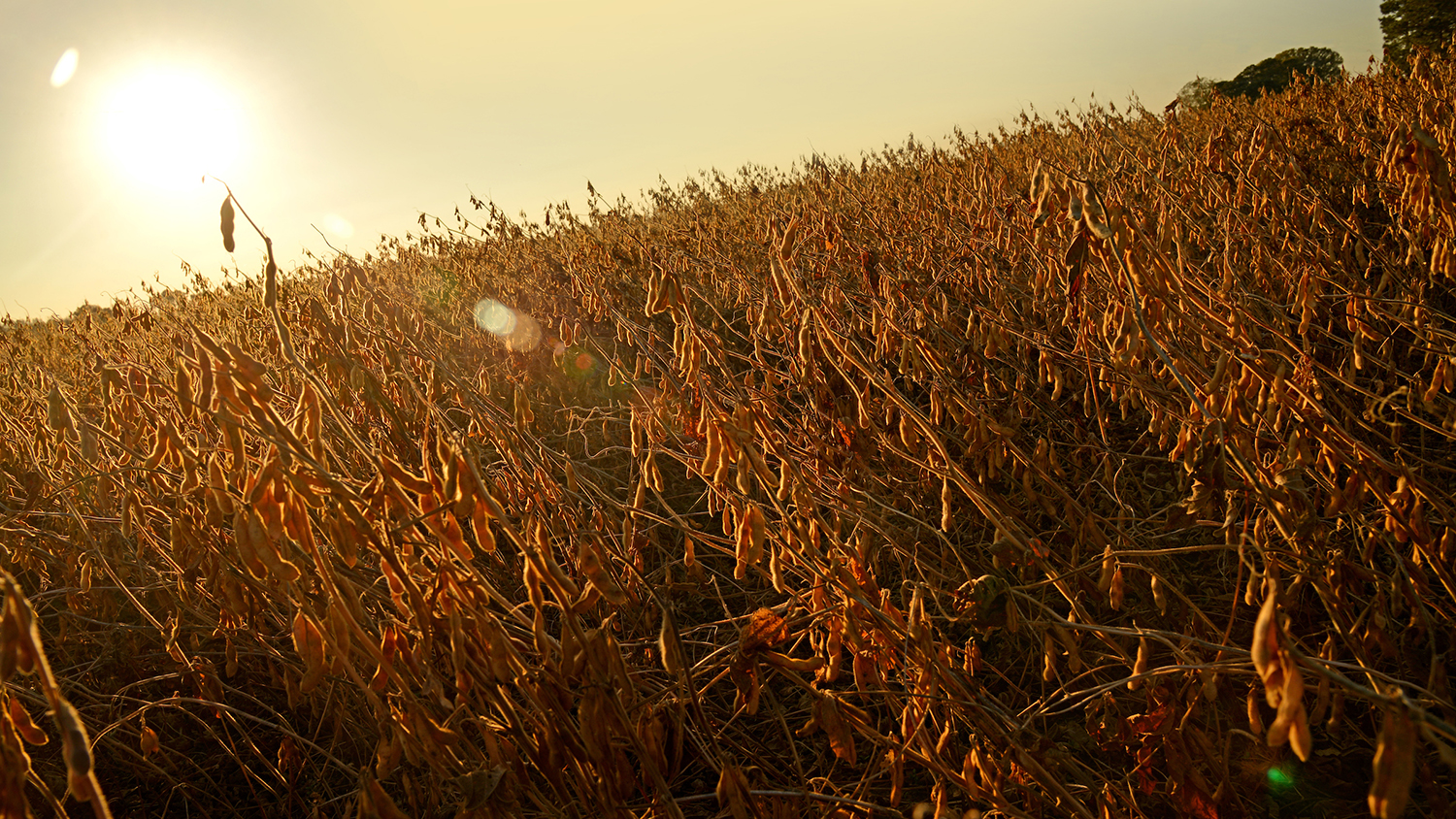Editor’s Note: This is a guest post by Dominic Reisig, professor of entomology at NC State; Clyde Sorenson, Alumni Association Distinguished Undergraduate Professor of Entomology at NC State; and Matt Bertone, director of NC State’s Plant Disease and Insect Clinic. This post is part of a series highlighting ways that NC State is helping us understand, mitigate and prepare for the impacts of climate change.
Agriculture has always been a risky endeavor, with the vagaries of weather, pests, soil, and water making every crop and every season a roll of the dice. Agricultural systems in most parts of the world are the result of generations of trial and error (and, over the last 100 or so years, agricultural research) that, ultimately, reduce that risk as much as possible. In other words, agriculture depends on the local predictability of environmental conditions. Climate change reduces that predictability.
Climate change is already impacting agriculture. Eastern North Carolina, for example, is experiencing more extreme weather events, saltwater intrusion (where saltwater seeps in from below or overruns the land above, making it un-farmable), and land subsidence (where the land sinks) from the human-mediated effects of agriculture and climate change. And other agricultural areas won’t be spared.
While many scientific articles and books have been written on this subject, the impacts of climate change on agriculture are still unpredictable. Through what we are writing here, we offer some speculation based on the research and observations of others active in the field of climate change and its impact on agriculture.
As entomologists, we study insects. In many ways, they are ideal indicators of what may be taking place in agriculture under climate change.
Agriculture and climate change have always been intertwined. For example, scientists estimate that when smallpox and other European diseases killed a large number of Native Americans in the 15th and 16th centuries, the corresponding decline in agriculture meant that an area of North America the size of France became repopulated by trees, and cooled temperatures worldwide.
Currently, we use about half of the world’s land for agriculture. As far as we can tell, land has not been modified by humans on this scale at any point in history. Furthermore, by burning fuels, humans have recently released massive amounts of gasses into the atmosphere that were formerly trapped underground in the form of fossilized organic material. Not only is agriculture impacting the climate, but the changing climate is impacting agriculture.

As entomologists, we study insects. In many ways, they are ideal indicators of what may be taking place in agriculture under climate change. Entomologists track crop insects yearly and know a lot about their distribution. Because of this, changes in the climate should be reflected by crop insects, and we can predict some of these changes.
First, insect metabolism is primarily influenced by temperature. Broadly, as temperatures warm, insects will multiply more quickly. In tandem, they will need to eat more to match their reproductive rate. Many pest insects may add generations to their annual cycles as the Earth warms, reaching higher densities and prolonging the period during which they can cause crop loss.
It’s even more nuanced, though, since insects have certain temperature ranges in which they thrive. Therefore, we expect certain insect species in the Northern Hemisphere to move farther north. Insects adapted to cooler climes will shift even farther north and tropical insects will expand their range. As insects shift their distribution, farmers will shift their cropping systems in tandem. As climate changes, many of the crops we traditionally associate with certain areas will change, as will the insects associated with these crops. For example, within 80 years, Iowa may be a better place to grow cotton than corn – it’s already a major crop in Kansas.

Complicating this even more is that crop plants growing in the carbon dioxide (CO2)-enriched atmospheres of a warming climate don’t have the same nutritional value to insects that plants growing in “normal” atmospheres do. Typically, insects will have to eat even more of these plants because they contain proportionally more carbohydrates to a given amount of protein. Making matters even more complicated, some plants may also become more nutritious as concentrations of CO2 increase, due to increased protein content. In other words, some plants that insects rely on for food may become better food sources, and some may become worse food sources, and changes in either direction could have significant – and unpredictable – effects on pest populations. Nothing in these relationships is straightforward.
Many tropical pests lack a key trait for surviving in temperate climates – the ability to endure freezing weather. In a warming climate, this should be less of a problem for them in currently temperate latitudes, since periods of freezing should be less common. However, while freezes may be less common in, say, North Carolina, those that do occur may be more severe, due to disruptions of polar circulation caused by loss of arctic sea ice. So, some of those tropical insects may move further away from the equator, but many may not be able to persist.
In an interesting twist, tropical temperatures have historically been predictable and regular; but tropical insects will become less common in the tropics, as these temperatures become less predictable. Again, responses will be nuanced. As pests of crops shift their distribution by their ability to overwinter in new places, organisms that keep pest populations in check (think viruses, bacteria, fungi, and other insect parasites) will shift their distribution as well; some may be positively affected by warmer temperatures, while others may decline.

Other arthropods, like pollinators that we value, may decline under warmer temperatures. Many bees, for example, have relatively little tolerance for high temperatures. These shifts add many degrees of unpredictability to the equation. Even though we can’t predict which species will benefit and which will lose out (or even become extinct) in a changing climate, we are certain that not all species will be able to adapt to climate change.
As weather events become more extreme, crops will become more stressed. Although more CO2 in the atmosphere could be beneficial for some plants, the ocean is warming, which means more short-term drought, more (and much wetter) tropical storms and hurricanes, and more flooding, which will offset any benefits increased CO2 levels have for plants. In the southeastern U.S., for example, temperatures have recently warmed two degrees Fahrenheit, mostly during the summer. A few insects do better when crops are healthy, but many thrive when crops are stressed, since it is then easier for the insects to overcome the plant’s weakened immune system.
Mother Nature always throws curveballs.
While humans do their best to manipulate agriculture to create uniformity, Mother Nature always throws curveballs. Many current agricultural pests can thrive, despite what we see as unpredictability, by feeding on a wide variety of plant hosts and by possessing the ability to move throughout the landscape to find suitable habitats. Some pests, like aphids, certain moths (with their caterpillar offspring as crop pests), spider mites, and thrips have a life strategy in which they produce many more offspring than will ever survive, but these offspring disperse widely throughout the landscape. In years favorable to these pests, populations thrive; in non-favorable years, populations simply persist at low levels throughout the environment. Therefore, pest outbreaks will almost certainly increase in a variable and unpredictable climate.
Another direct result of climate change concerns crop pests that are distributed by weather events. Pests like moths and aphids can move thousands of miles on weather fronts. Farmers are often taken by surprise after tropical storms and hurricanes, when unusual pests settle in their fields far beyond their usual range. As extreme weather events occur with more frequency, situations like this will become more common.
The Earth’s climate has already changed and will continue to do so for the foreseeable future, unless we accept our role in modifying the climate, and make changes to delay our impacts on it. While our objective outlook is bleak for agriculture, we know that agriculture is also an inherently human-mediated activity that can impact climate. Humans can modify their environment on a massive scale and, as the environment changes, we can only hope that we will use this power to adapt agriculture and the environment to benefit the entire world.



